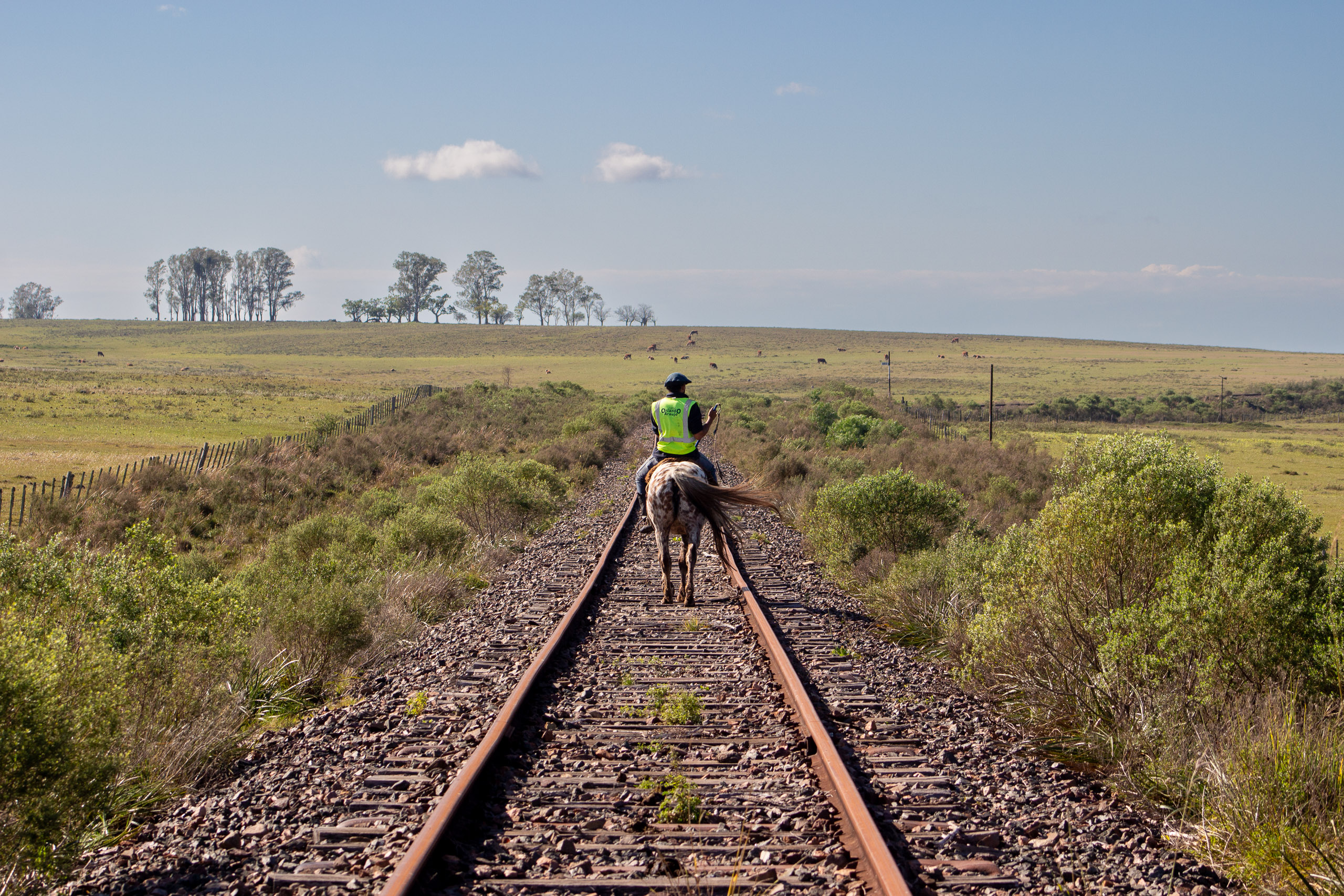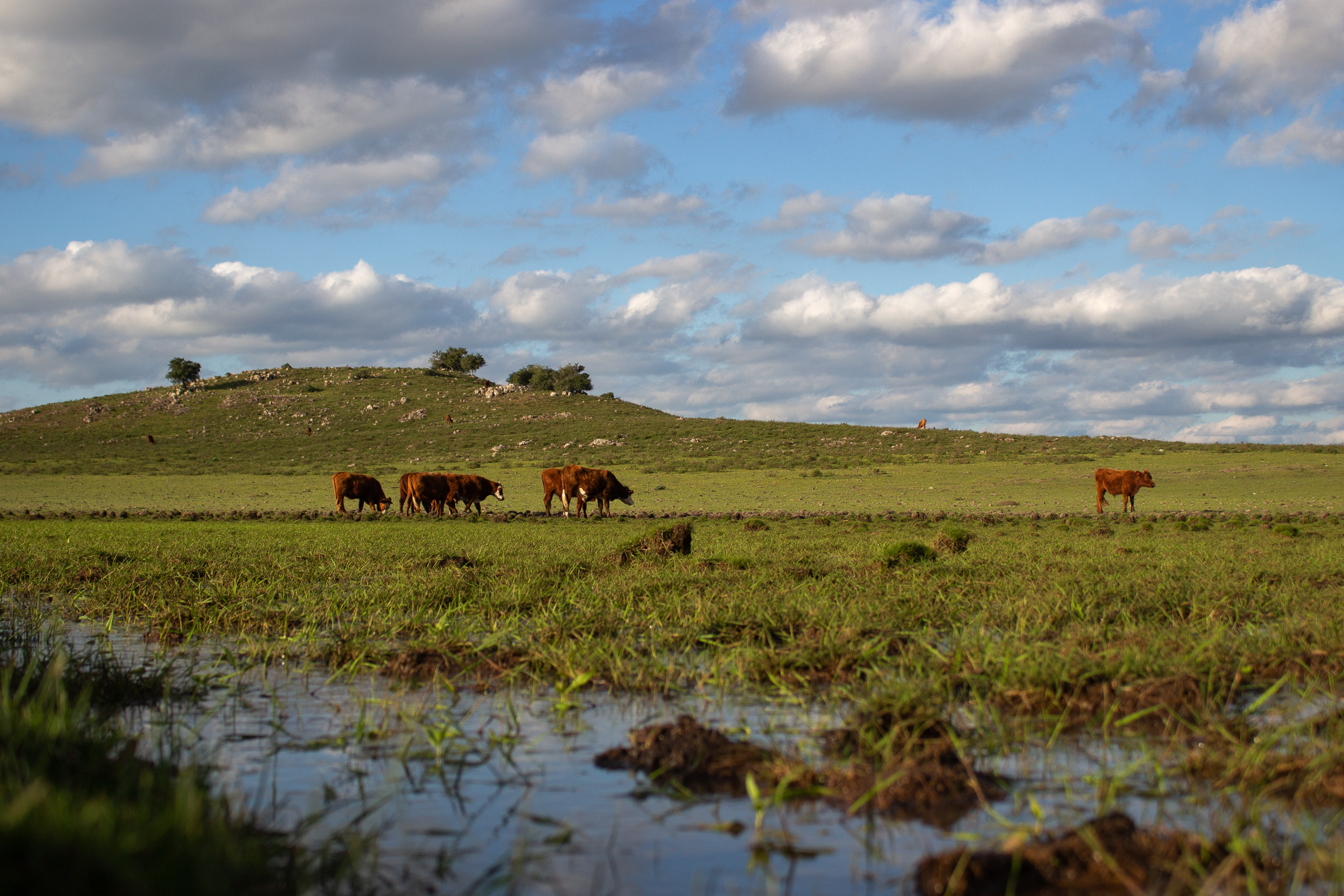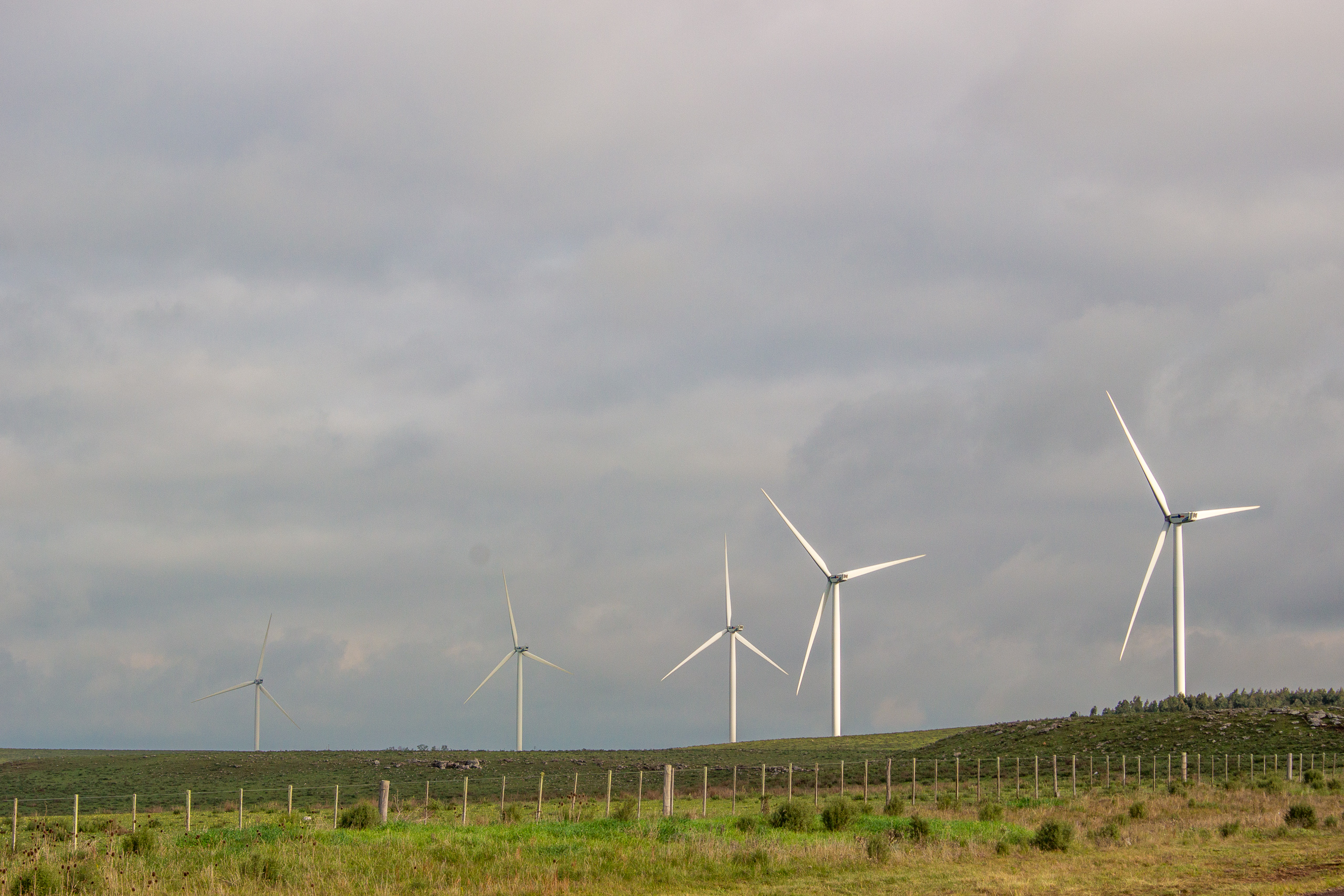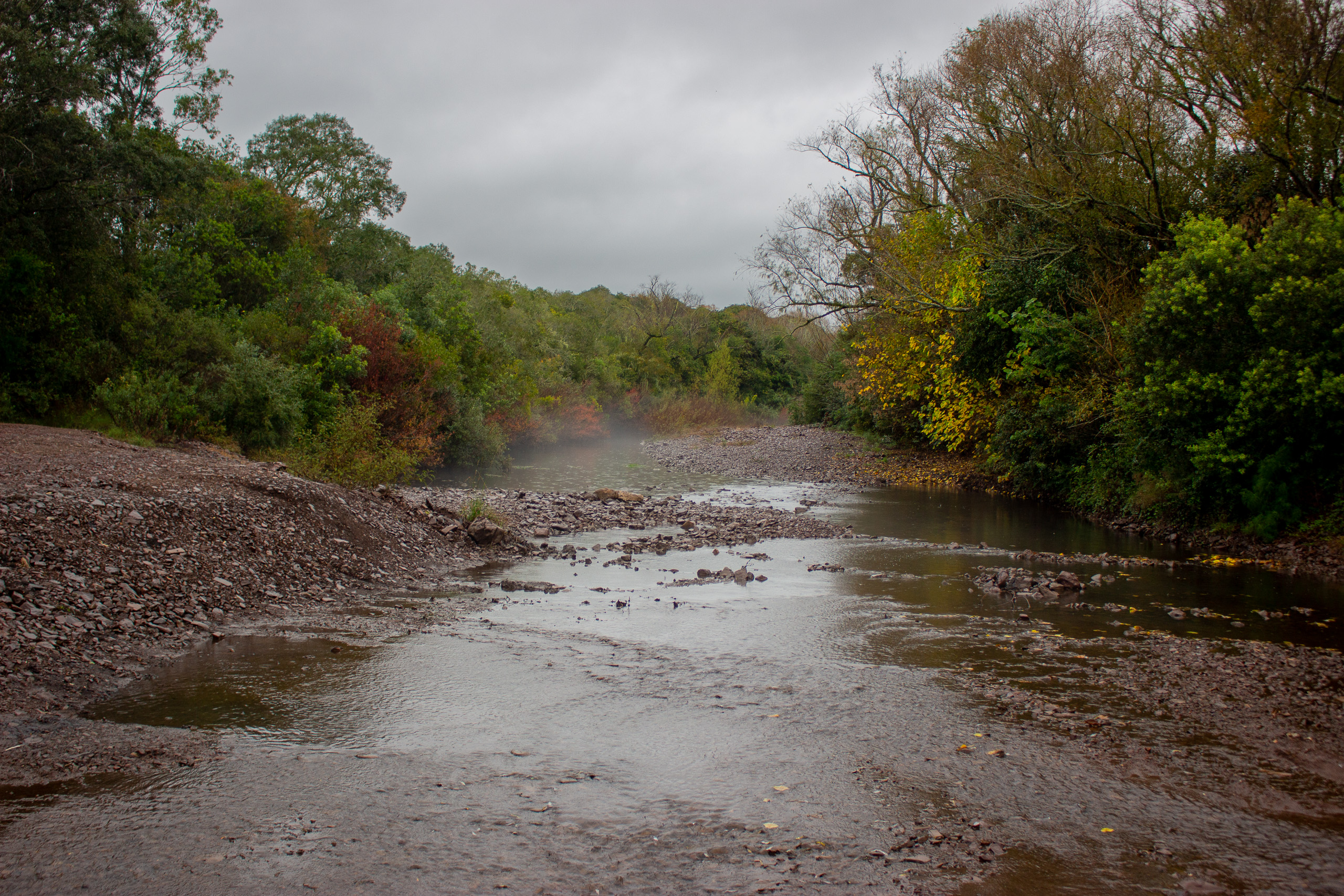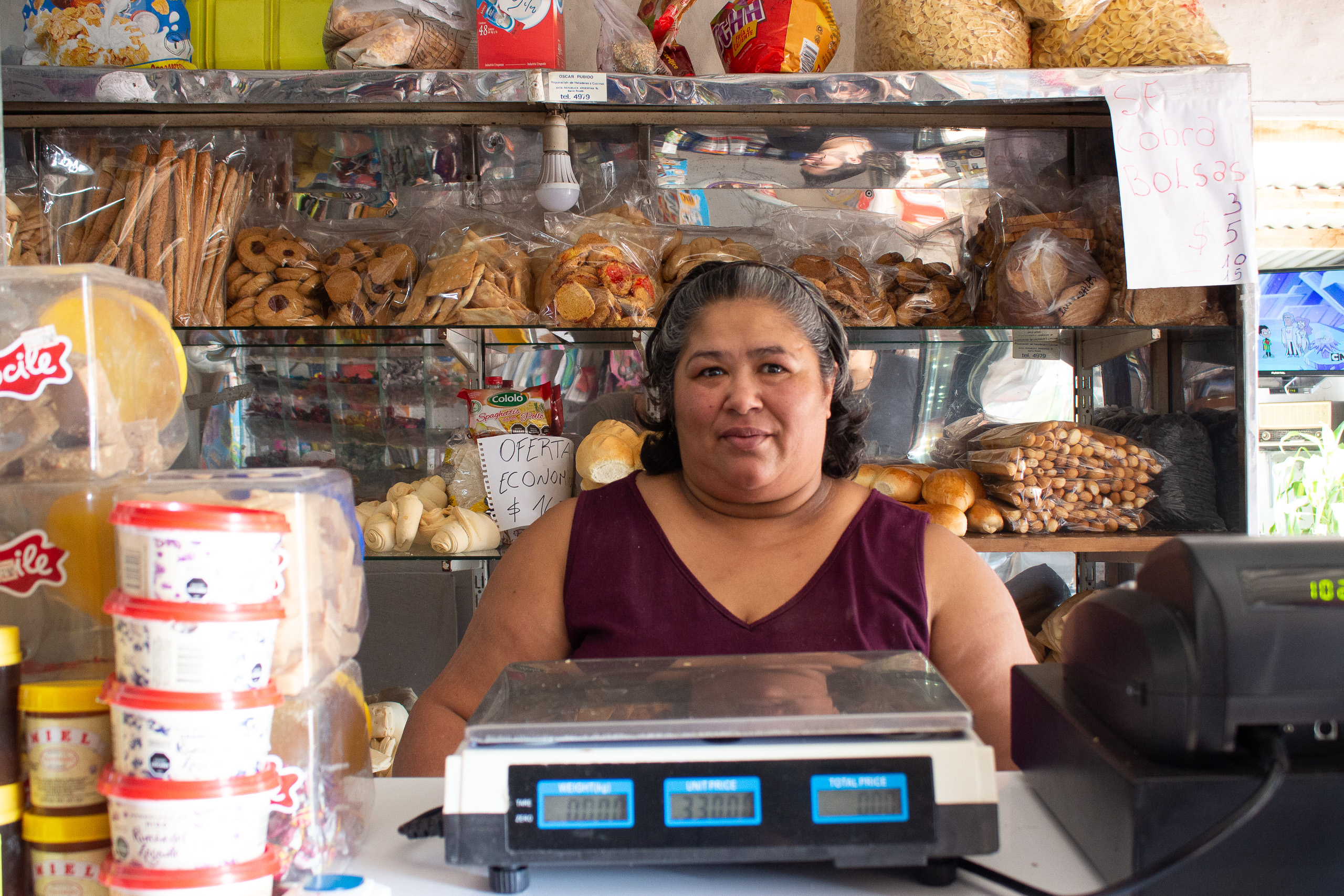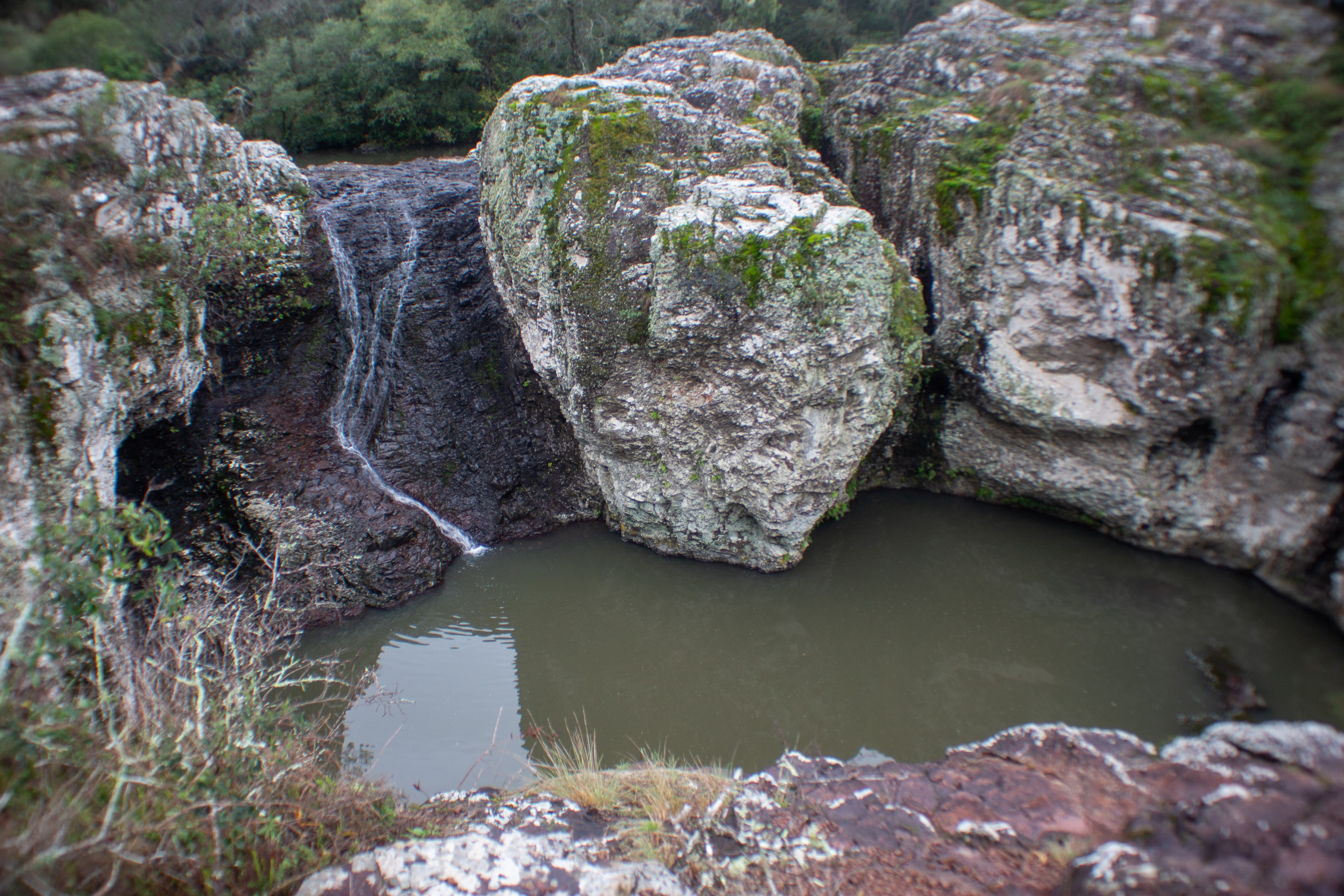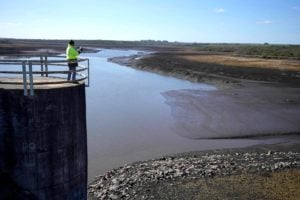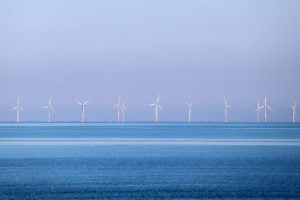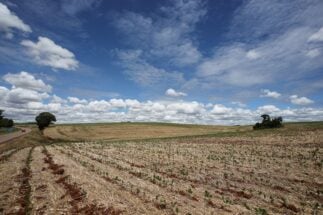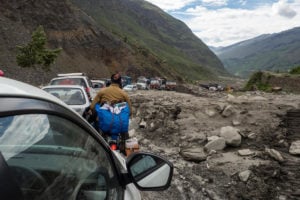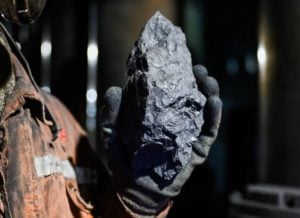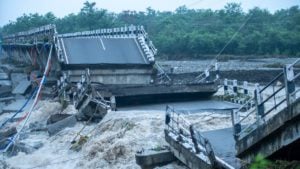The way of life in Tambores tends to be fairly modest. Many here in this small town in northern Uruguay long for a more prosperous past, when the railway, now disused, used to connect with the wider country. As it looks to the future, the town is now anxious to defend its most valuable asset: water.
Today, the town’s 1,500 inhabitants are awaiting news on the progress of a project to produce green hydrogen, often dubbed the “fuel of the future”, made using renewable energy. The plant will use this hydrogen to generate 70,000 tonnes of another fuel, methanol, each year, potentially tripling the town’s current water consumption, and bringing change to this rural area.
Green hydrogen’s presence in Uruguay is expanding fast, with the government aiming to generate 2% of its GDP from the industry by 2040. Last year, an official hydrogen roadmap was launched, with the Tambor project one of its starting ventures. According to María José González, coordinator of the green hydrogen programme of the Ministry of Industry, Energy and Mining (MIEM), the strategy could help green hydrogen to generate as much income for Uruguay as its well-established beef industry.
“The aim is to have a hydrogen production of close to 1 million tonnes per year by 2040, and an increase in the generation of renewable energy for this hydrogen production,” explains González. She adds that, in this first phase to 2030, the emphasis will be on pilot tests and the production of derivatives such as methanol and other synthetic fuels for heavy domestic transport, and even fertilisers.
Between these and other investments, Uruguay expects to have an annual turnover of US$2.1 billion from green hydrogen by 2040. In addition, the new industry could generate more than 35,000 direct skilled jobs, according to government officials.
But amid this excitement, there are also concerns among some of the population, including many in Tambores, over the possible impacts of this nascent industry. González says the country has the capacity to ensure this growth is smooth, asserting that “Uruguay has quite strong environmental regulations. In addition to water permits and environmental permits, we are going to generate new regulations,” while acknowledging that “the concerns of the neighbouring residents are completely genuine”.
The project
Here in Tambores, located on the border of the departments of Paysandú and Tacuarembó, people have regularly heard promises of employment and transformation, without the use of fossil fuels, emissions or pollution. But if this change is to involve green hydrogen, this will require use of the town’s water, from underground formations known as aquifers.
Hydrogen gas can be obtained through a process known as electrolysis, in which water (H20) is separated into hydrogen and oxygen using electricity – in the case of “green” hydrogen, derived from renewable sources such as solar and wind power. The hydrogen obtained can be combined with carbon dioxide to obtain methanol, which itself can be used as a fuel, or as a raw material in the chemical industry.
Unlike in the capital city Montevideo – currently experiencing an historic water crisis – in Tambores, tap water is still flowing as normal, filling cups and gourds of mate tea. There is enough for cooking and bathing, for watering the plants, for pets to drink. The water in Tambores is fresh and crystal clear – and a resource that the locals want to preserve.
The Tambor project is set to be carried out by Belasay SA – a group created by the German company Enertrag and the Uruguayan SEG Ingeniería – and according to its 2021 preliminary report, will harness “the capacity of solar irradiation and wind resources” of the region. It claimed that the area around Tambores “has abundant water resources, particularly groundwater from the Guaraní aquifer, capable of supplying the hydrogen plant without affecting other uses of the resource.”
Three boreholes have already been drilled – with permission granted by the National Water Directorate (Dinagua) in November 2022 – to measure the water pressure at the 100-hectare site, to be leased for the next 30 years. The hydrogeological and geophysical study commissioned by SEG Ingeniería, seen by Diálogo Chino, states that “it is possible to achieve the necessary flow rates to carry out the project”. The project, according to company estimates, could require six such boreholes and would consume the same amount of water as population centres in Uruguay with between 2,250 and 8,400 inhabitants.
Also in November, members of the Tacuarembó departmental government voted in favour of recategorising the land on which the project is to be sited from “productive rural” to “industrial suburban”. With this legal change, the land is no longer exclusively for agricultural or forestry production and is now eligible for industrial activities, although surrounding farms remain exclusively rural.
The Tambor project will include the installation of wind and photovoltaic plants, as well as an electrolyser, to produce an estimated 13,000 tonnes of green hydrogen, or 70,000 tonnes of methanol, per year, according to the preliminary report. It is planned for the majority of this production to be exported.
This production, the report continues, would require between 500 and 700 cubic metres of water per day, which would be obtained from underground sources. In particular, the Arapey and Guaraní natural aquifers – the latter of which is shared by Uruguay with Brazil, Paraguay and Argentina, and is one of the largest known aquifers on the planet.
“Aquifers are rock units that contain water and are interconnected through fractures. The fractures cause the water from rainfall to collect inside, through which the aquifers are recharged, following what we call the water cycle,” explains Graciela Piñeiro, a biologist from the University of the Republic who specialises in geosciences. “Extracting water from one aquifer can affect the amount of water available in other connected aquifers,” Piñeiro adds.
The specialist, who has raised concerns over these potential problems with the authorities, says that the use of groundwater for a fuel generation project is unprecedented worldwide, and may compromise the availability and replenishment of the water system.
Piñeiro also warns that “the extraction of water from aquifers can cause land displacement due to the instability of the system” and that when water molecules are broken down to obtain hydrogen, the water cycle is broken.
According to González, the MIEM’s green hydrogen coordinator, “this statement is not correct”. While it is true that the water molecule is broken down, after this, she adds, “whether it is used in an electric car or as a fuel, water is generated again and goes back into the atmosphere”, referring to the water vapour that is a by-product of hydrogen’s use in fuel cells.
Doubts and rejection
Since May, the south of Uruguay, home to 60% of the population, has been experiencing one of the worst water crises in the country’s history, caused by the drying up of the Paso Severino dam, the main supply of water to Montevideo, and the departments of Canelones and San José.
To alleviate the situation, the state water company OSE has taken the extreme measure of mixing freshwater with saltwater from the Río de la Plata, more than doubling the sodium content per litre of water recommended by the World Health Organisation (WHO).
On 13 July, a group of United Nations experts released a statement that described this decline in water quality as “alarming”, and condemned that government recommendations to reduce household water consumption do not also apply to large-scale consumers and industries. Businesses and the state, they said, have a responsibility to respect a human right to water: “Uruguay must put human consumption at the forefront… failure to prioritise its use is unacceptable.”
Watching from afar, Tambores residents have questions over the future quality of their water supply, should the green hydrogen plant reach operation. “We are not fully informed about what they are going to treat, nor what the process will be like,” says Graciela Colman, who owns a shop in the nearby village of Piedra Sola. “From what little we know, they would be touching the Guaraní aquifer. They tell us that the area is going to grow and that it will generate employment during the construction of the project, but what will happen afterwards?”
The residents of Tambores, along with Piedra Sola and nearby Valle Eden, found out about the project almost by chance, through a small advertisement published in a local newspaper. It called for a neighbourhood meeting in which Belasay would explain the scope of the Tambor project.
“The people of Tambores knew nothing about it – that is to say, they [the company] gambled that as few people as possible would attend,” says Miguel Ángel Olivera Prieto, a journalist, teacher and artist who has lived in the town for three years. “Well, what we did was to start spreading the word immediately, and in a town of 1,500 people, we gathered almost 400.”
At that meeting, held in May 2022, the company told residents of their proposals to turn the place “into a national and regional icon of clean energy production”, promising that 1,900 people would be directly employed during its construction, that another 2,000 would benefit indirectly, and that, once operational, the production would employ more than 500 people.
That night, many residents voiced their opposition to the project, including declarations that “the water is not to be touched”. In February of this year, a group of 43 residents filed a case with the country’s supreme court, describing Tacuarembó department’s decision on land use to allow the installation of the plant to be unconstitutional.
In the last year, Belasay has hired staff to survey opinions in the town and contacted local entrepreneurs for future corporate social responsibility projects, while local ranchers – potential landlords – have promoted the project on their own properties and at talks.
In response to a request for comment on the possible impacts of the Tambor green hydrogen plant, Diálogo Chino was told that “Enertrag only invests in and develops sustainable projects.”
The company spokesperson added: “The project is currently in the pre-feasibility stage, which means that preliminary studies are being carried out to assess its technical, economic and environmental feasibility. As part of this process, some studies and surveys are being carried out that will form part of the environmental impact study.”
Disinformation
Since last year, the Tambores secondary school has been discussing the green hydrogen plant project with its students, with the aim of informing them and building their own opinion as citizens.
They have made mock-ups of what they think the plant will look like, and conducted surveys among the community around the school, focusing on a range of subjects and different approaches to the project’s technical, economic, social and environmental issues.
The risk of disinformation is the most repeated concern among the responses of some 80 adults, relatives or neighbours of the children, according to Pablo Posada, the school’s director.
The main attraction of the initiative, according to respondents, is employment opportunities that would help young people to remain in the area, while the cultural and social changes it could generate are seen as the key negative aspect. Environmental issues are also a concern, not so much among older respondents but among the students themselves. Some older students expressed fear that the whole aquifer could be destroyed or that the Pozo Hondo – a spectacular rocky pool fed by a waterfall and which the locals bathe in during the summer – could dry up.
“It is an extractive project, an enclave [whose benefits] will not spill over into the territory and that will leave nothing for Tambores or Uruguay,” says Ana María Barbosa, a researcher at the University of the Republic who has spent much of her life in the town, like her family before her. “Nobody talks about the social impacts it could have,” claims the 61-year-old.
Óscar Núñez, a gaucho with Indigenous heritage who works for the Tambores municipality, also feels that the benefits of the new plant would not be for him or his neighbours.
“We are a rural village. We don’t have engineers, biologists, physicists or chemists for that kind of production. And it might take a long time to produce qualified professionals here in the village. So there won’t be any work in that area,” he says. Núñez says water is not as plentiful as it used to be, and claims that the Tambor project could cause major problems: “It will be a significant exploitation of groundwater. We are going to lose that water.”
The February case filed with the supreme court was also directed against Belasay, alleging that the project violates article 47 of the constitution, among other concerns.
This article links the element of water with the most fundamental right to life, calls for “solidarity with future generations”, enshrines “the principle of putting social reasons before economic ones” and decrees that “surface and underground waters belong to the public domain of the state and are subordinate to the public interest”. Communities claim that permitting a private company to exploit these reserves contradicts this principle.
The residents’ lawyer, Grey Espinosa, expects news by the end of the year from the supreme court. He believes that the fact that the court didn’t dismiss taking on the case – something it was entitled to do – is a good sign.
Belasay, the lawyer says “has already responded to the court. They consider that there is no effect on the water resource, which is the reason of the claim.”
While the south of Uruguay suffers from a lack of water, the north fears for its future abundance, and awaits more news on a project that could have some bearing on it.
